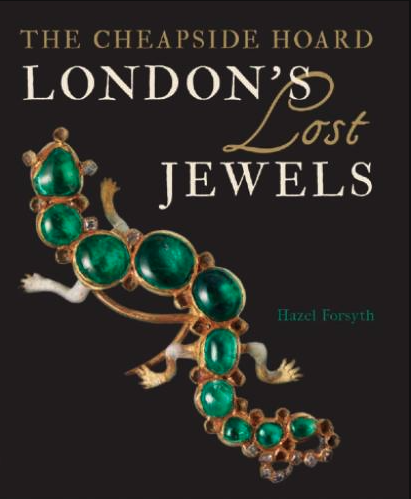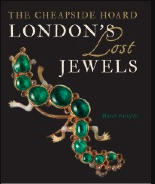THE CHEAPSIDE HOARD: A WORLD ENCOMPASSED
RESCHEDULED Wednesday March 24th 6pm
In 1912, laborers on a building site in Cheapside in the City of London unearthed a great trove of gemstones and jewels which had lain undisturbed for some 300 years. Known and celebrated as the Cheapside Hoard, it is still the largest known cache of its kind in the world. These objects, dazzlingly beautiful, intricate and often astonishing, are evocative emissaries from London's past. The Cheapside Hoard remains the single most important source of our knowledge of the Elizabethan and early Stuart jewellers' trade and, by extension, life and fashion in London society of the era.
‘I did never see any such daily shew any so sumptuous in any place in the world, as in London’ Fynes Moryson, 1617

Tickets
Event Name: Cheapside Hoard | Talk
Event Description: Join us for a talk from the collection's curator, Hazel Forsyth. Recording will be available for 1 year
Event Date: Wednesday 24th March 2021 - 6:00pm
Our events are held using Zoom.
WANT TO LEARN MORE? YOU CAN VISIT THE COLLECTION
For almost 300 years a buried treasure lay undisturbed below one of London’s busiest streets. No one knew it was there until workmen started to demolish a 17th century timber-framed building in Cheapside near St Paul’s Cathedral in 1912. On the 18th June, one of the labourers began to break up the cellar floor with his pick and as he threw the chalky soil aside, something caught his eye. He had uncovered what is now known and celebrated as The Cheapside Hoard, the greatest cache of Elizabethan and Jacobean jewellery in the world, and one of the most remarkable and spectacular finds ever recovered from British soil.
The Cheapside Hoard constitutes a goldsmith-jeweller’s stock and was buried at the onset of the English Civil Wars in c.1641. As a time-capsule of contemporary taste and the jewellers’ trade it is unsurpassed. It remains the most important source of our knowledge of Elizabethan and Jacobean jewellery and provides unparalleled information on the international gem trade in an age of global conquest and exploration.
The jewels reveals a fascinating world of intrigue, treachery, passion and crime. New research and the latest scientific techniques have enabled us to unlock some of its secrets. It is a multi-faceted gem of a story.
The Cheapside Hoard will be going on display in a permanent dedicated gallery when the Museum of London moves to its new site in West Smithfield (2024).

London's Lost Jewels has been written to accompany the exhibition, which marked the 100th anniversary of the original public display and for the first time reveals the Cheapside Hoard in its glittering entirety. It provides much new information about the city's role in the international gem and jewellery trade during one of the most dynamic periods of English history. A wealth of fascinating stories and lavish illustrations bring these exquisite treasures to life.
More information
Hazel Forsyth is the Senior Curator of the Medieval and Early-Modern Collections at the Museum of London. She is a Fellow of the Society of Antiquaries; a Fellow of the Royal Society of Arts; a freeman of the City of London; a Liveryman of the Worshipful Company of Goldsmiths' and a Liveryman of the Worshipful Company of Pewterers'. She has worked on numerous exhibitions in this country and abroad and has published widely on a range of subjects including: London’s Lost Jewels: The Cheapside Hoard (2013) and Butcher, Baker, Candlestick Maker: Surviving the Great Fire of London (2016).



